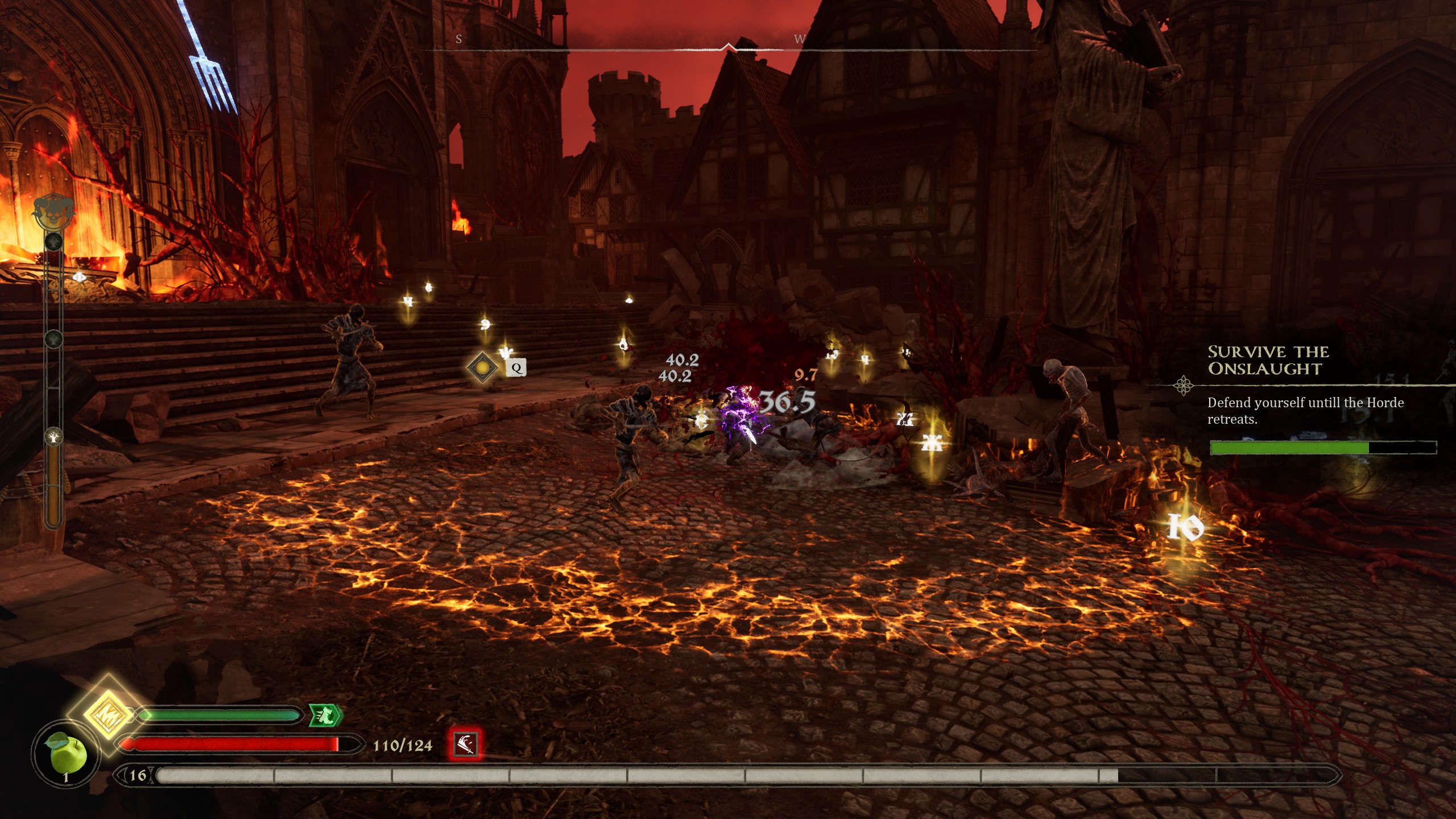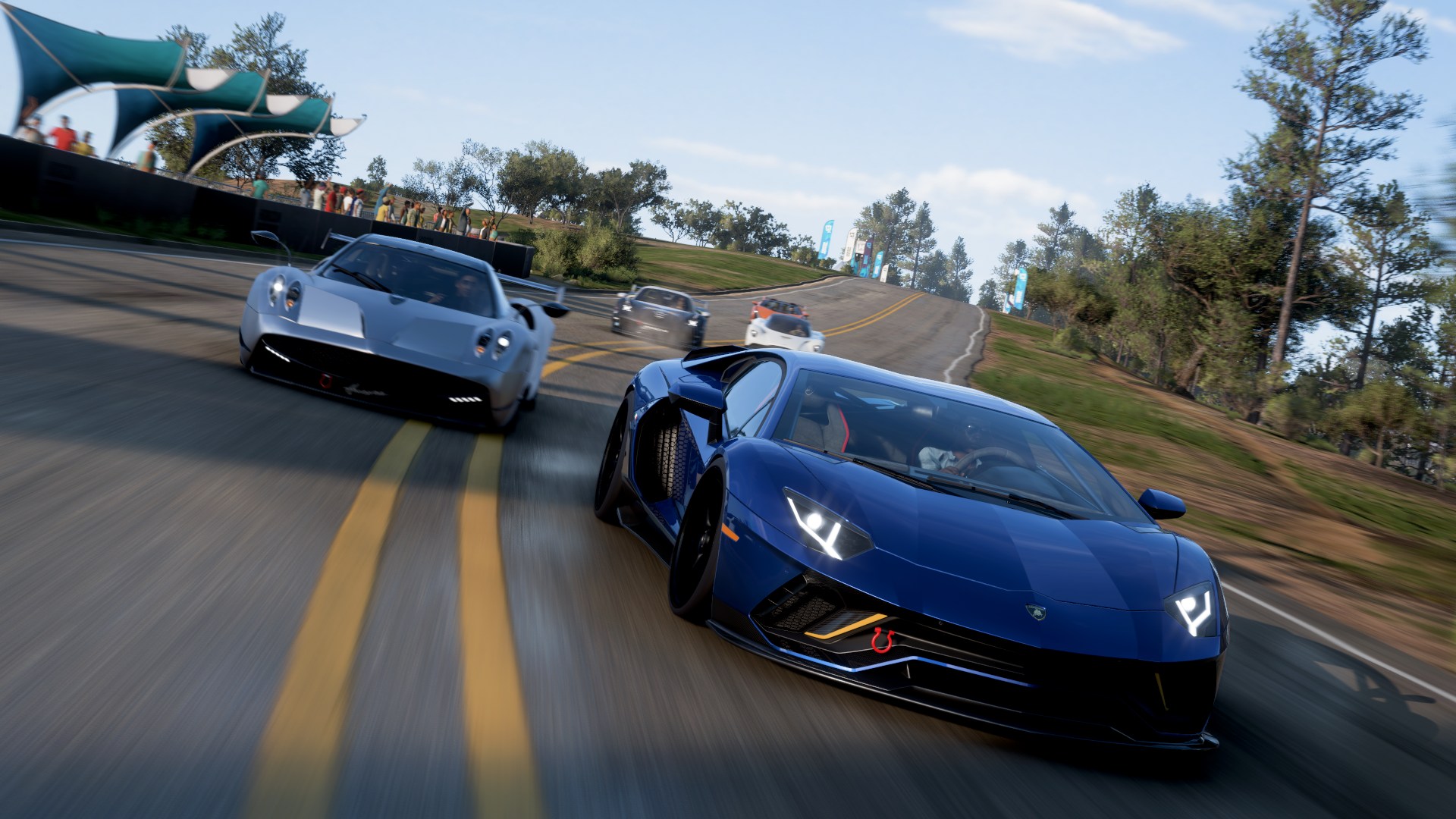As a newly qualified paramedic, the city of Le Mascaret needs you on the front lines, tending to the medical needs of the locals. Put your driving skills to the test as you race down the streets in record time to get your patients to the hospital, complete mini games to treat patients, and of course, let that siren blare!
Being an arcade adventure driving game, the way in which you get around the city is by no means traditional. In fact, it’s more akin to Crazy Taxi, but with a top-down approach. Controlling your vehicle and dodging traffic won’t be your only challenge on the roads. Face the disruption of construction sites, traffic accidents, torrential rain, sandstorms and blizzards. Too many collisions will damage your ambulance and see the condition of your patients deteriorate. While assisting your patients will be your priority, whether that’s on pickup or on the roadside, the game focuses on its chaotic driving mechanics to inject a new lease of life into the ever-growing selection of ambulance games. For speedrunners out there, a further level to the progression system will allow for missions to be replayed, granting opportunities to earn a better score and faster completion times.
A little ambulance with a lot of power
We were lucky enough to speak with Manufacture 43, the studio behind Highway to Heal, all about what players can expect from the game’s vibrant world and the adventures this uniquely exhilarating experience has to offer.
GameScout: Where did the idea for Highway to Heal originate from and what existing titles were you inspired by?
Manufacture 43: In 2022, Daniel (Game Programmer and President at Manufacture 43) was working on some prototype inspired by old Micromachines games, but he didn’t really want to make a racing game. While watching the show Atypical, he noticed the dad was an EMT and this wasn’t very represented in games. While thinking about it, he thought it could make a good game. He wasn’t fully settled on the idea though.
Things became more serious after waking up on a Sunday morning with the vision: what if, after bringing the patient to the hospital, the player could have a replay mode where they could see the full run from the perspective of the patient, inside the ambulance, with all the tools bouncing around because of the crazy driving. This was a fun idea that really motivated the initial concept, but will never make the real game as it would be very expensive for something very silly.
Of course, starting from this concept, old GTA2 came to mind. But to bring a more paramedic gameplay, our attention also turned to Trauma Center and Warioware games. People often talk to us about Crazy Taxi. A great game that unfortunately gets old quite quickly. That’s why we try to bring more to the table, with proper storytelling.
GameScout: Can you tell us more about what kind of emergencies you will attend?
Manufacture 43: We want the experience to be quite light-hearted. Patients won’t ever die because of your bad driving. Worst case that can happen would be a patient with a broken leg arriving with two, but the opposite could happen too! The game is quite arcadey and by having very good driving and the proper equipment, a patient could arrive at the hospital in better shape than when you picked them up.
It’s not just a taxi game with some care mini-games, though. You will also get to assist firefighters in their missions, like carrying oxygen bottles to people in need in sandstorm days, transport organs, etc. There will also be funny side quests!
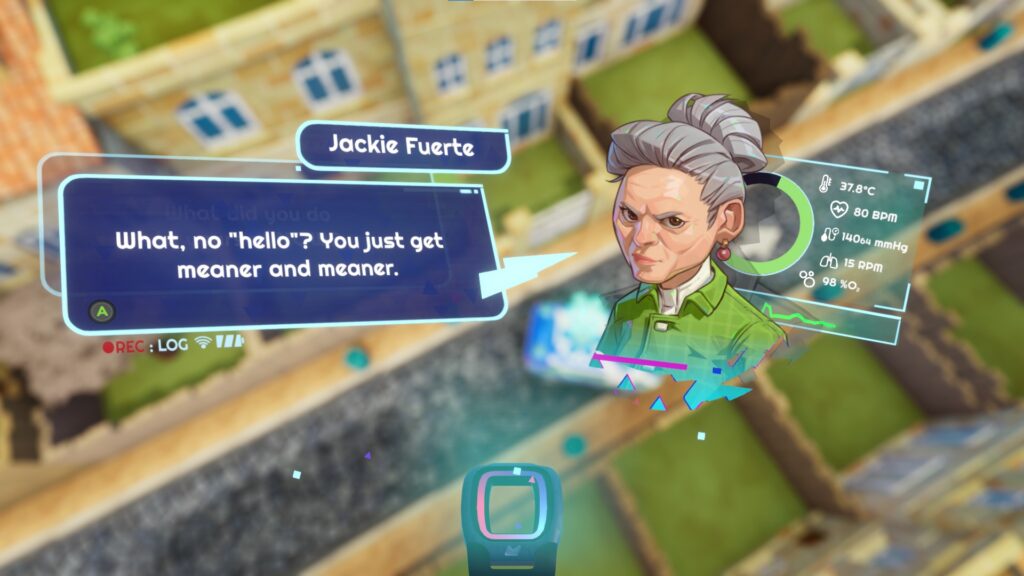
As you progress through the over 40 rescue missions that make up Highway to Heal, you will be able to make various upgrades to your ambulance and the equipment used to treat patients. I expected that players would be paid for completing jobs or a shift, with that money being used to make upgrades. However, Highway to Heal will draw on its exploration and progression elements to allow upgrades to be made.
GameScout: There doesn’t seem to be a currency in Highway to Heal. How will upgrades to vehicles and equipment work? What sort of upgrades can you make?
Manufacture 43: Equipment in the game is shared by the people of Le Mascaret, the city where you play. As such, the first thing to do is find them, which can happen as a “reward” of a mission or by helping someone that will build it! Just roaming around the city can get you access to them too.
The next step is being allowed to use them. Some tools need special training and are not given to anyone. That’s why you’ll need to rank up as a paramedic to be able to equip them.
As I said, the tools are shared, so that’s why you can only equip three. You have to give them back if you want to use a different one.
GameScout: You’ll spend all your time in your ambulance in Highway to Heal. Are there opportunities to explore the world with your ambulance outside of your shift work?
Manufacture 43: While not visible in the current demo, yes, exploration will be part of the game. As I said previously, you’ll find equipment by roaming around the city, but that’s not all.
Knowing the city is important to find the best routes. Some will probably surprise us but others we plan for you. Finding all the shortcuts will help you achieve the best times and the game will show you how many you have left to find.
By driving around town, you’ll also find new garages, drug stores, hospitals and town halls! The latter is very important, as they will add to the minimap all the planned moves or works of the day that may block streets in their neighbourhood.
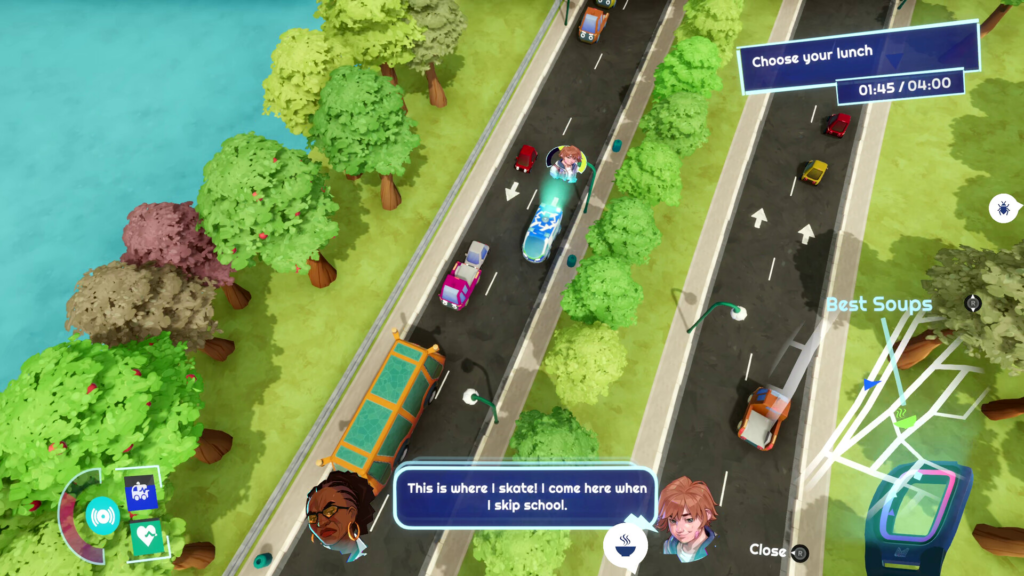
Highway to Heal is set in an open-world European inspired city that’s futuristic and climate-friendly. A holowatch is your best friend, providing everything you need to get around the city, accept missions, and switch up the music in your ambulance. Even the hospital admission doctor, Dr Hernandez, is a hologram, spooky!
What’s very much real is the paramedic duo you’ll be on board with, Jakub and Mishra, as well as the patients you will help. Jakub and Mishra are polar opposites in terms of personality, age, and experience on the job. In fact, the entire cast of characters are expected to be a diverse bunch, each with their own experiences that play a pivotal role in developing the story.
GameScout: Why have you gone for a futuristic and climate-friendly setting and what message do you aim to get across here?
Manufacture 43: There’s a funny story there too. We have a city generator to help us design it. The first time a city was drawn with it, it was the Chartrons area of the city of Bordeaux where Daniel lives. When he first started adding trees to the generator, the first value he input was WAY TOO BIG. But the first thought that came to mind while seeing it was “damn, the area would be amazing like that.”
This was the sparkle. After that, we started thinking that most games are dystopian and maybe we have seen enough that things can be bad, so why not try to show a better way? This was also fuelled by the Hypermondes festival happening nearby. The theme that year was “Utopia” and there was an exhibition by architect and comic artist, Luc Schuiten. His exhibit included his works “cities of tomorrow,” where he draws real towns at several times in history, from the 19th century to his utopian green future, and they are amazing!
Our message is the same. We want to show that these depictions of the future (some might call them solarpunk) are not just beautiful but actually enviable. We want to drive people to really want them instead of showing them another dystopian disaster, so that maybe they will want to vote and maybe even act to make these kinds of changes happen.
GameScout: At the same time, the game seems to have a focus on community. How diverse is the roster of characters in the full game and what part will they play in directing the narrative in Highway to Heal?
Manufacture 43: Climate change is all around us right now. We can see its effects and we see that politicians are really not moving in a direction that will prevent all the disasters foreseen by scientists around the globe working on the subject. Now is not a matter of if, but a matter of when people will start massively moving from areas of the planet that will become uninhabitable.
These are the people of Le Mascaret. They are people from everywhere, gathering, caring and trying together to survive. It’s the complete opposite of closing borders and going to war to prevent people from coming in. Those people want to live happily just like the ones already in this oasis that Le Mascaret is. They also have many skills, if they managed to get there, so just let them in, they will be more than helpful, they will be welcome.
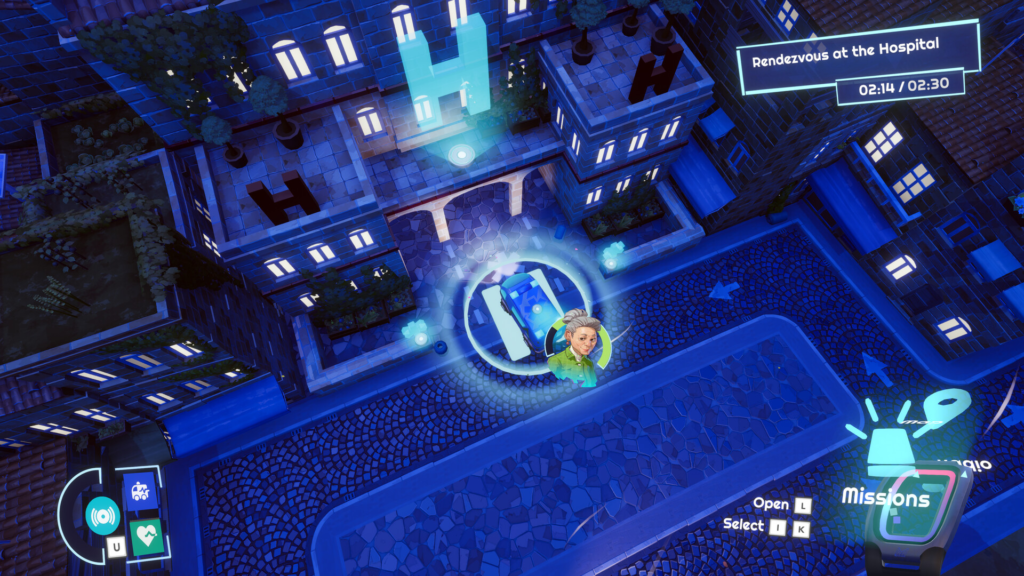
This year, Manufacture 43 showcased Highway to Heal at the third instalment of Spawn Festival. This event gives the public the opportunity to try out an array of indie games, attend exhibitions, and meet with members of indie video game studios. For indie developers, such events are a fantastic opportunity to gather feedback and get the word out about their projects.
GameScout: We see that you attended Spawn Festival. What did you learn from that experience?
Manufacture 43: How could we miss an event where players live in one of the two cities that inspired the one from the game!? The other one is Bordeaux, obviously. Angoulême is the hometown of our former level designer and of the ENJMIN, the French national school of video games that he and Daniel attended. The public there is super nice and diverse. Of course, there are a lot of game-developers-to-be but also very young kids and much older ones. It was nice to see people playing our game and having fun.
GameScout: What part of the development process are you currently in and when can players expect a release date to be announced?
Manufacture 43: We are in production but a release date is very hard to say right now. A 2026 would be my best guess. The economy is in bad shape and video games are no exception. It’s very hard to find financing at the moment, so sometimes we have to just halt development and do contract work to avoid going bankrupt. To that end, we are about to start a crowdfunding campaign on Ulule! Hopefully it will help us progress a lot more this year.
GameScout: A final question to end things off! There are so many obstacles trying to get in the way of your driving. What is the one tip you would give to players hopping into the driver’s seat in Highway to Heal for the first time?
Manufacture 43: We can already say that we are going to improve the AI so that it doesn’t get stuck anymore. The one thing that is very important is to avoid driving the wrong way! That’s why we added clear arrows everywhere.
Also, when streets are blocked with people moving in, roadworks, or accidents, they are always clearly marked at the beginning of the street (if there is no marking, go pedal to the metal, this is a shortcut!) In an upcoming demo update, you’ll be able to go the city hall and get marked on the minimap all those blocked streets in the relevant neighbourhood.
With each shift, it’s good to make a detour there, because they are not the same everyday. The city won’t be a static labyrinth, it’s alive!
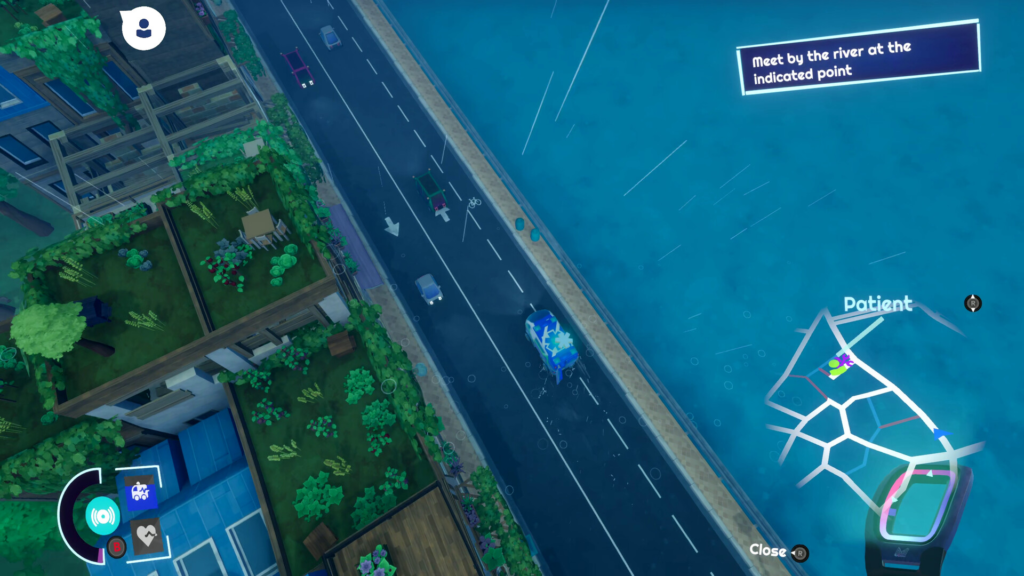
To keep up with Highway to Heal, tune into the weekly devlog and be sure to wishlist the game on Steam, where a demo is also available to try out. Get more of the latest news by following Manufacture 43 on Bluesky and joining the conversation on Discord. Monthly updates will be provided to Ulule backers when the campaign launches.


